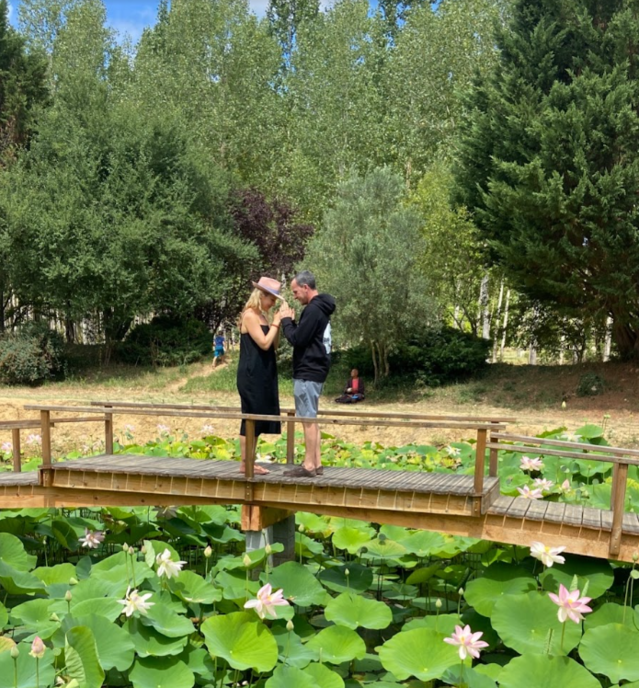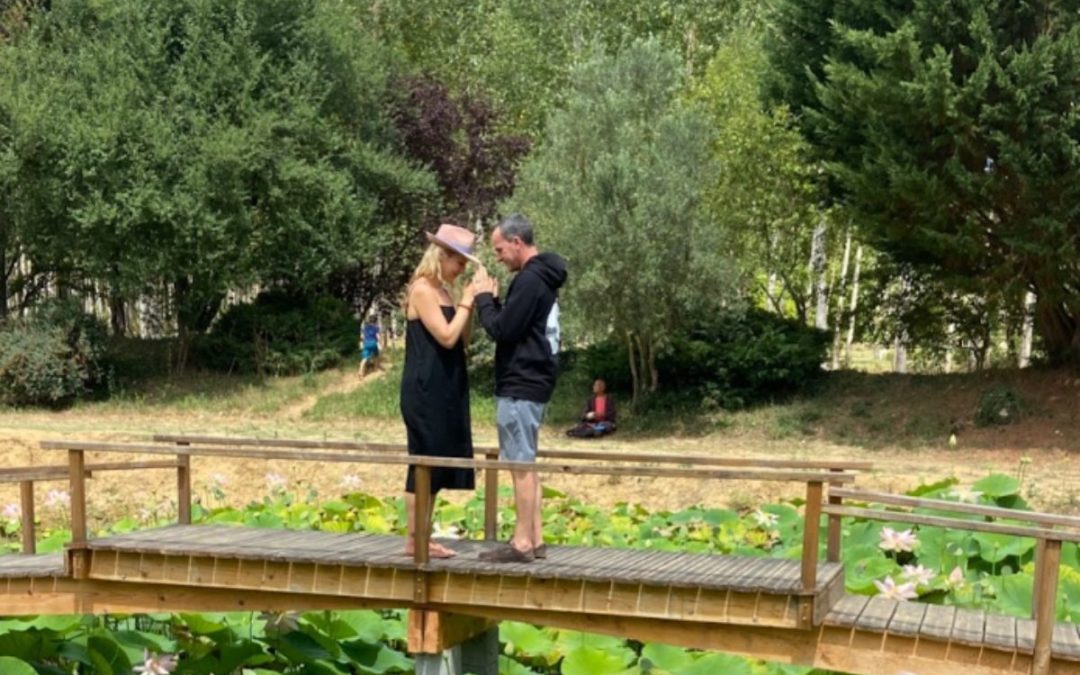Restoring the health of our family and planting a seed for our future health.
KEY POINTS
- We spend more time at home than ever, but we may not really feel at home.
- Cultivating joy and happiness is very important as is accepting suffering.
- The paradox is that the faster we go, the more dissatisfied we feel with what we have, so we rush to get more.
Instead of a cross-country road trip, this summer we took our kids to a Buddhist monastery in Southern France. Teeter-tottering on parental burn-out, we were craving peace, time away from devices, and strategies to handle increasingly uncertain times. It’s a stretch to sign-up 9- and 12-year-old boys for a week of mindful walking, silent meals, and sitting meditation, but we were willing to take the leap if it could reconnect us.
My family, like most, has been struggling. My husband works in education and I am a clinical psychologist. During the pandemic, we have been guiding folks through the same troubles we faced—over-busyness, anxiety, irritability, and exhaustion.
To cope with pandemic stress, we found ourselves working more, overdependent on technology, and feeling increasingly dissatisfied. We were maxed out by relentless to-do’s and needed to find our ground as a family again.
About Plum Village Monastery
Thich Nhat Hanh was a Zen master, author, and peace activist who founded Plum Village Monastery 40 years ago. Thay (as his students call him) took refuge in Thénac, France, after being exiled from Vietnam for speaking out against the war. Thay went on to teach peace on an individual and global level and was nominated for a Nobel Peace Prize by Dr. Martin Luther King Jr. in 1967.
Thay’s teachings are simple, accessible, and make sense to busy modern parents. Well known for saying, “When you wash the dishes, wash the dishes,” Thay urges us to be present in each aspect of living. He was central to bringing mindfulness to the West alongside many Western scholars like Jon Kabat-Zinn and Kristin Neff, who both cite him as a root teacher.
Thay’s message is particularly applicable to current times. His teaching of “No mud, no lotus” guides us to turn toward our suffering with compassion in order to transform it. In the center of each of the three hamlets at Plum Village sits a large lotus pond as a reminder that beautiful things grow out of mud.

My partner and I first visited Plum Village Monastery 22 years ago when Thich Nhat Hanh was still teaching. I was starting a clinical psychology Ph.D. program, and the experience inspired me to research mindful awareness as an intervention for eating disorders. I now use compassion and mindfulness interventions in every aspect of my work.
The lessons we learned at Plum Village helped restore the health of our family and planted a seed for the health of their future.
Lesson 1: I Have Arrived. I am Home.
We spend more time at home than ever, but do we really feel at home? Instead of being present, we spend most of our time in our heads—planning, fixing, and judging.
Thich Nhat Hanh is known for his “Gathas” or short phrases you repeat with your breath. The first gatha we learned at Plum Village was:
Breathing in, I have arrived.
Breathing out, I am home.
A bell rings every hour at the monastery, signaling us to pause, come back to our bodies, slow our breath and be present in this moment. Learning to stop and get present can become a new habit. This habit cultivates contentment, clarity, and peace in your body. Slowing your breathing has benefits at the cellular level and is fundamental in stress reduction, according to UCSF researcher Elissa Epel. And present-moment mindfulness can help you deepen relationships, something many of us are craving in our increasingly disconnected and distracted world.
How to Come Back Home
- Choose a cue (e.g., getting in the car, starting a meeting, or the automated bell from the Plum Village app) to signal yourself to stop.
- Pause what you’re doing.
- Find your breath.
- Repeat the gatha, “I have arrived, I am home,” and feel more at home inside your body.
- Go back to your activity with this presence.
Lesson 2: Happiness Is Here and Now.
As an acceptance and commitment therapy (ACT) practitioner, I teach people to accept and allow for life’s suffering so they can act on their values. Daily living, a pandemic, racial trauma, climate change, and war give us plenty of material to work with.
At Plum Village, I learned that cultivating joy and happiness is also very important as is accepting suffering. Paying attention to the joyful moments builds our capacity to be present with pain. Research shows that savoring the good things in life builds resilience and greater life satisfaction.
To cultivate more joy, Sister “Joyful Effort” gave us homework to look for joyful moments in our day and share them with others. I noticed the cool shade of aspen trees on a hot walk and the sound of kids giggling during silent meditation.
Joyful practice will give you the energy to face the pain of living.
How to Cultivate Joy
- Look for small moments of happiness or ease.
- Savor your experience by lingering on it, paying attention to your full sensory experience.
- Hold them lightly and with delight.
- Share them by telling someone else.

Lesson 3: There Is No Need to Hurry.
Many of us are caught in a stream of business—hurrying from one Zoom meeting to the next, eating lunch in our cars, distracted by our phones, and increasingly disconnected from nature.
Life is moving faster than ever, so we feel like we need to hurry up. The paradox is that the faster we go, the more dissatisfied we feel with what we have, so we rush to get more.
At Plum Village, every activity is a meditation practice—walking, waiting in line for food, and listening to others talk were all done with our full attention. We practiced eating in silence and contemplated the sun, rain, farmer, and plant in each bite. We walked mindfully as a stream of more than 700 people through plum orchards and aspen trees. I said the gatha silently with each step, “Yes, yes, thank you, thank you.”
Slowing down and connecting with nature in this way benefits your cognitive functioning and overall well-being.
Simple things become very rich. When you stop hurrying through life, you are better able to take in the good that is available to you right now.
At first, we all struggled with slowing down. My kids whispered, “When can I eat?” at meals and “Where are we going?” on walks. But we soon realized there was nowhere to go, nothing to do, but to be there and enjoy it. Together we sang the gatha:
Happiness is here and now
I have dropped my worries
Nowhere to go, nothing to do
There is no need to hurry
How to Not Hurry
- Turn a daily activity such as eating, driving, or walking into a non-hurry practice.
- Carry it out in silence and with your full attention.
- Remind yourself there is nowhere to go, nothing to do, but to be here in this task.
- Savor it!
Take a mini-retreat at home and try these three lessons for yourself.


